Lip tint is a versatile and popular cosmetic product that adds a natural flush of color to your lips, enhancing your look while keeping it understated. Making your own lip tint at home is not only easy but also allows you to customize the shade, ingredients, and texture to suit your preferences. By using simple, natural ingredients, you can create a lip tint that is both safe and nourishing for your lips. This guide will walk you through the steps of how to make lip tint.
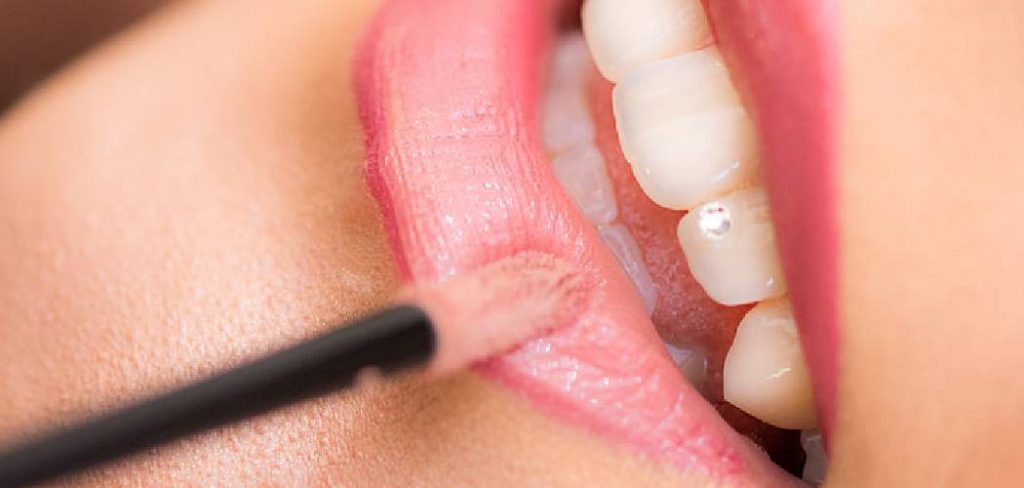
Why Make Your Own Lip Tint
Creating your own lip tint comes with numerous benefits that make it a worthwhile endeavor. Firstly, it allows you to control the ingredients, ensuring that your lip tint is free from harmful chemicals and tailored to your preferences. Homemade lip tints can be made using natural, skin-friendly ingredients like beetroot powder, cocoa butter, or essential oils, which nourish and protect your lips. Secondly, it is a cost-effective alternative to store-bought products, allowing you to save money while still enjoying a high-quality cosmetic. Lastly, making your own lip tint diy gives you the freedom to experiment with colors and textures, enabling you to craft a product that perfectly complements your style and needs.
Tools and Materials You’ll Need
To create your own homemade lip tint, you’ll need a few essential tools and materials. Here’s a list to help you get started:
- Beetroot Powder or Natural Colorants: For vibrant, natural color.
- Cocoa Butter or Shea Butter: To provide a smooth, moisturizing base.
- Beeswax Pellets: For structure and consistency.
- Coconut Oil or Almond Oil: To add hydration and shine.
- Essential Oils (optional): For a subtle fragrance or added benefits.
- Measuring Spoons: For accurate ingredient measurements.
- Mixing Bowls: To blend the ingredients efficiently.
- Double Boiler or Heatproof Bowl: To safely melt the beeswax and other solid ingredients.
- Lip Balm Tubes or Small Containers: For storing your finished product.
- Mixing Stick or Spoon: To stir the mixture thoroughly.
Having these items at hand will simplify the process and ensure your lip tint turns out exactly as you envision.
10 Methods How to Make Lip Tint
1. Beetroot Lip Tint
Beetroot is a popular natural ingredient for homemade lip tints due to its vibrant red pigment and nourishing properties. To make a beetroot lip tint, start by peeling and grating a fresh beetroot. Simmer the grated beet in a small saucepan with a teaspoon of coconut oil until the mixture thickens slightly. Strain the liquid into a small jar and allow it to cool. Apply a small amount to the lips using a fingertip or a clean brush. This method produces a deep, natural red tint while moisturizing the lips, making it ideal for daily use.
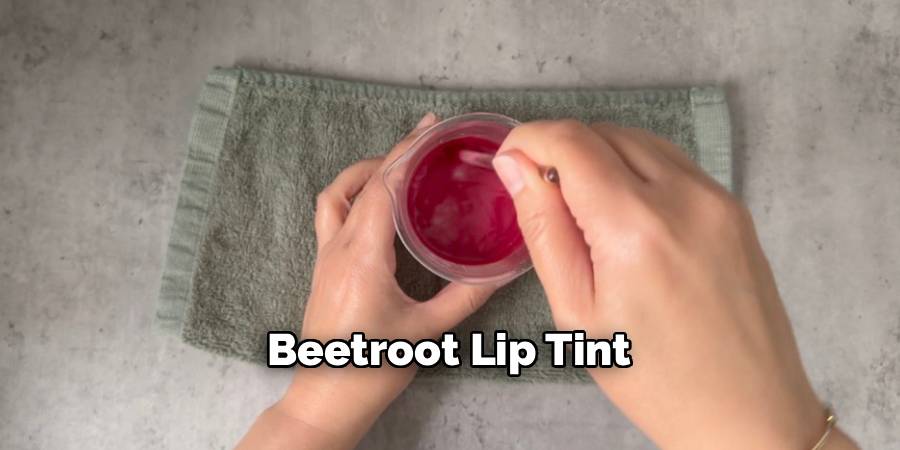
2. Hibiscus Flower Lip Tint
Hibiscus flowers contain natural anthocyanins, which give them a rich red or pink hue. To create a hibiscus lip tint, steep dried hibiscus petals in hot water for several minutes to extract the color. Strain the petals, and then mix the colored liquid with a small amount of almond oil or beeswax for texture. This tint can be applied directly to the lips with a fingertip or brush. The result is a soft, rosy tint that enhances the lips’ natural color while providing gentle hydration.
3. Pomegranate Juice Lip Tint
Pomegranate seeds or juice can also be used to make a fresh, vibrant lip tint. Extract the juice from pomegranate seeds using a small blender or by pressing them with a spoon. Mix the juice with a few drops of coconut oil or shea butter to create a smooth consistency. Apply a thin layer to the lips for a natural pinkish-red glow. This method is perfect for those seeking a subtle, everyday tint with antioxidant benefits for lip health.
4. Cranberry Lip Tint
Cranberries are rich in pigments that produce a beautiful red lip tint. Mash fresh cranberries and mix them with a small amount of honey or coconut oil to create a paste. Apply directly to the lips for an instant natural tint. Cranberries provide a bright, bold shade while offering slight exfoliation and nourishment. This method works well for creating a playful, fresh look suitable for both casual and festive occasions.
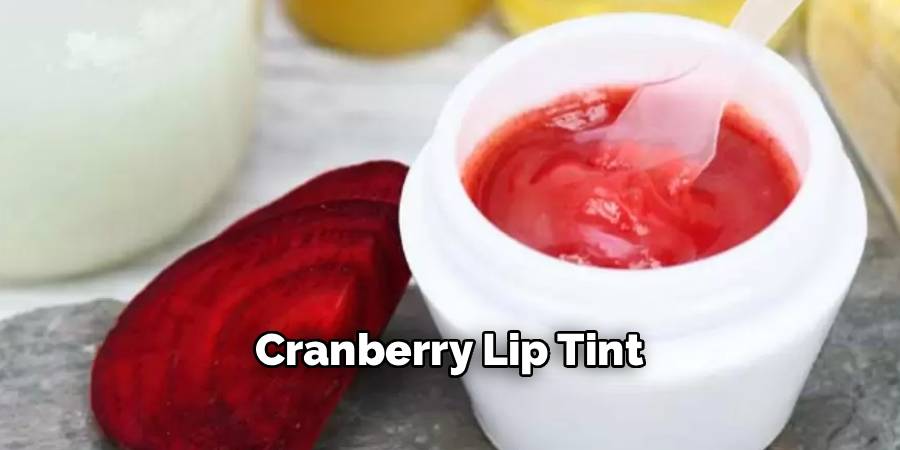
5. Cocoa Powder Lip Tint
For a natural nude or brownish tint, cocoa powder can be used as the base. Mix a small amount of unsweetened cocoa powder with coconut oil or shea butter until you achieve a smooth, spreadable paste. Apply lightly to the lips for a subtle brownish tint that enhances natural lip color. Cocoa powder also has antioxidant properties, making this method both cosmetic and beneficial for lip health. This approach is ideal for creating soft, everyday tints for neutral or warm makeup looks.
6. Beetroot and Pomegranate Combination Tint
For a deeper, more vibrant tint, combine the natural red of beetroot with the pinkish hue of pomegranate juice. Grate and simmer beetroot with coconut oil, then add a teaspoon of pomegranate juice to the mixture. Stir well and strain into a small jar for storage. The resulting lip tint produces a rich, long-lasting color suitable for both casual wear and special occasions. This method allows customization of the intensity by adjusting the ratio of beetroot and pomegranate.
7. Lip Tint with Arrowroot Powder
Arrowroot powder is often used to thicken and give a smooth texture to homemade lip tints. Mix a natural pigment, such as beetroot or hibiscus extract, with a pinch of arrowroot powder and a few drops of almond oil. Heat gently and stir until well combined, then pour into a small container to cool. The arrowroot provides a creamy texture, making the lip tint easy to apply evenly. This method is excellent for creating a balm-like consistency while retaining natural color and moisture.
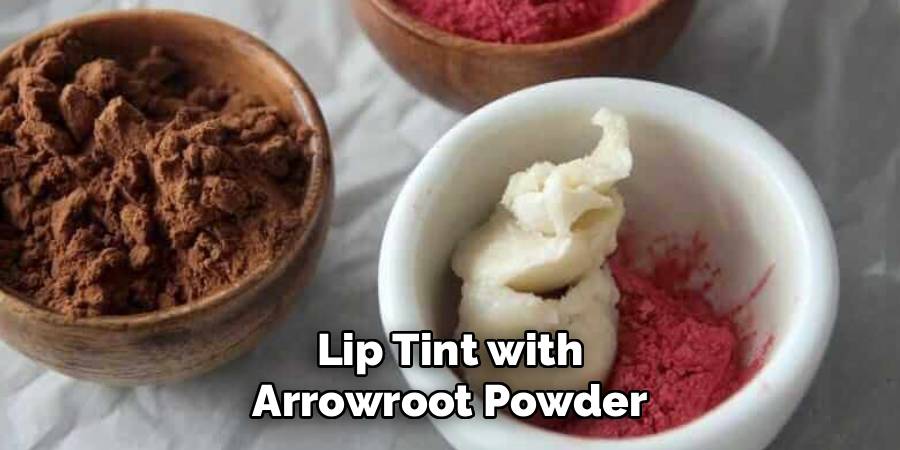
8. Oil-Based Lip Tint with Essential Oils
For a luxurious and hydrating lip tint, use an oil-based method. Combine a natural pigment (beetroot, hibiscus, or cranberry) with a carrier oil such as jojoba, coconut, or sweet almond oil. Add a drop or two of essential oils like peppermint or vanilla for fragrance and a soothing effect. Mix thoroughly and store in a small jar or lip balm container. This method provides a tinted lip balm effect that is both moisturizing and aromatic, perfect for dry or chapped lips.
9. Powdered Natural Pigment Tint
For a more concentrated lip tint, powdered natural pigments like beetroot powder, hibiscus powder, or cocoa powder can be used. Mix the chosen powder with a small amount of coconut oil or shea butter until smooth. Apply lightly to the lips for a precise tint that can be built up for more intensity. Powdered pigments are convenient for adjusting the shade and producing a long-lasting tint without additional dyes or chemicals. This method is excellent for those seeking a highly customizable, natural cosmetic product.
10. Blended Lip Tint with Beeswax for Longevity
To create a lip tint with longer wear and a balm-like texture, incorporate beeswax into your formula. Melt a small amount of beeswax with coconut oil or shea butter, then stir in a natural pigment such as beetroot or hibiscus extract. Pour the mixture into a small container and allow it to cool. Beeswax not only provides structure but also helps the lip tint adhere to the lips, making it last longer while providing hydration and protection. This method produces a natural, glossy lip tint ideal for all-day wear.
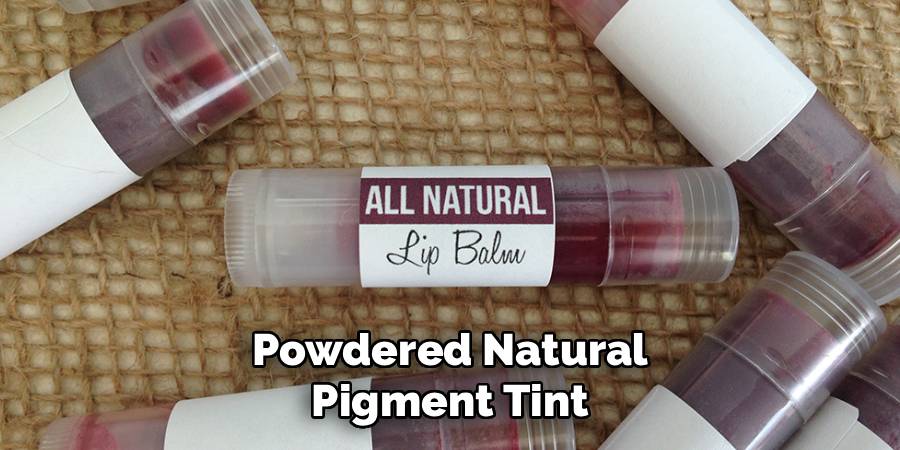
Maintenance and Upkeep
To ensure your homemade lip tint remains fresh and safe for use, proper storage and care are essential. Store the container in a cool, dry place away from direct sunlight to prevent melting or ingredient degradation. Always use clean fingers or a sanitized applicator to apply the tint, minimizing the risk of contamination. Check the product regularly for any changes in smell, texture, or color, as these could indicate spoilage. If stored properly, your lip tint can last anywhere from 3 to 6 months. For the best results, consider making smaller batches to enjoy a consistently fresh product.
Conclusion
Making your own lip tint allows for complete customization, from the shade and intensity to the texture and moisturizing properties. Natural ingredients such as beetroot, hibiscus, pomegranate, and cocoa powder provide vibrant color while nourishing the lips. Combining oils, beeswax, or arrowroot powder enhances texture and wearability, creating a lip tint that is both beautiful and functional. Whether you prefer a subtle flush, a bold color, or a glossy finish, these ten methods provide versatile options for achieving natural, homemade lip tints tailored to your preferences.
Regular use of these tints not only enhances your makeup routine but also ensures that your lips remain healthy, hydrated, and beautifully colored without relying on synthetic dyes or harsh chemicals. Hopefully, this article gave you some helpful tips about how to make lip tint successfully, so now that you have the proper knowledge on how to get the job done, why not give it a try today?
About the Author
Jane Hubbard is a passionate beauty expert with a wealth of experience in makeup, hair, and overall beauty techniques. After years of working as a hairdresser specialist, she followed her entrepreneurial spirit and started her own consultancy business.
Jane has always been driven by her desire to help others feel confident in their own skin, and she does this by sharing her knowledge, experiences, and practical beauty tips. Through her consultancy, she empowers individuals to embrace their unique beauty, offering tailored guidance that boosts both self-esteem and personal style.
Professional Focus
- Specializes in makeup, hairstyling, and beauty consulting.
- Provides personalized beauty advice, tips, and techniques to help individuals feel confident in their appearance.
- Dedicated to staying up-to-date with the latest industry trends and developments.
- Passionate about creating a comfortable and empowering experience for every client.
Education History
- University of Craft and Design – Bachelor of Fine Arts (BFA) in Woodworking and Furniture Design
- Woodworking Apprenticeships – Extensive hands-on training with skilled craftsmen to refine carpentry and furniture making techniques
- Online Courses & Masterclasses – Continued education in advanced woodworking techniques, design principles, and specialized tools
Expertise:
- Makeup artistry, hairstyling, and beauty consulting.
- Personalized beauty techniques to enhance confidence and self-expression.
- Educating clients on how to maintain their beauty routines at home.
